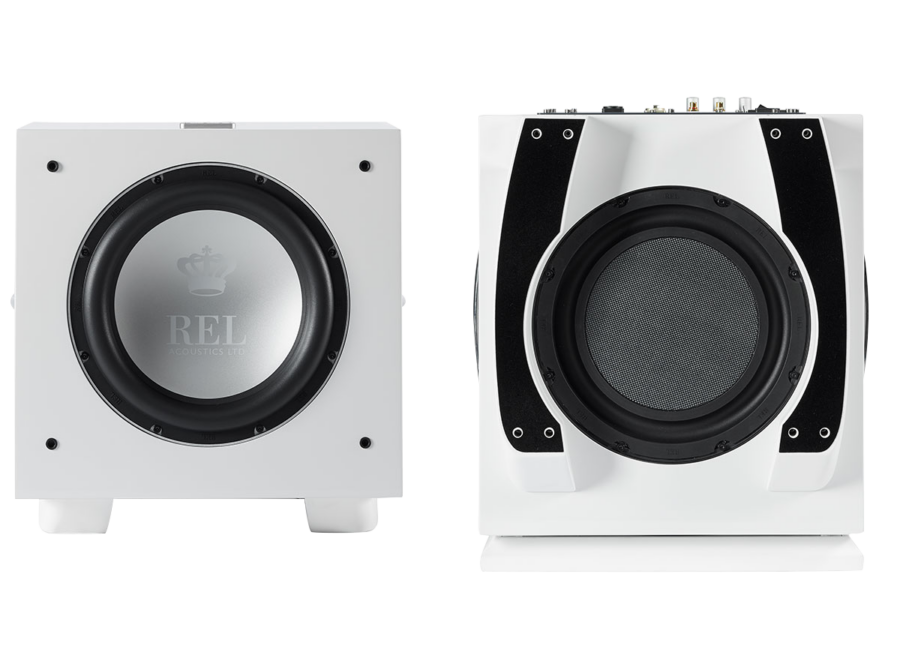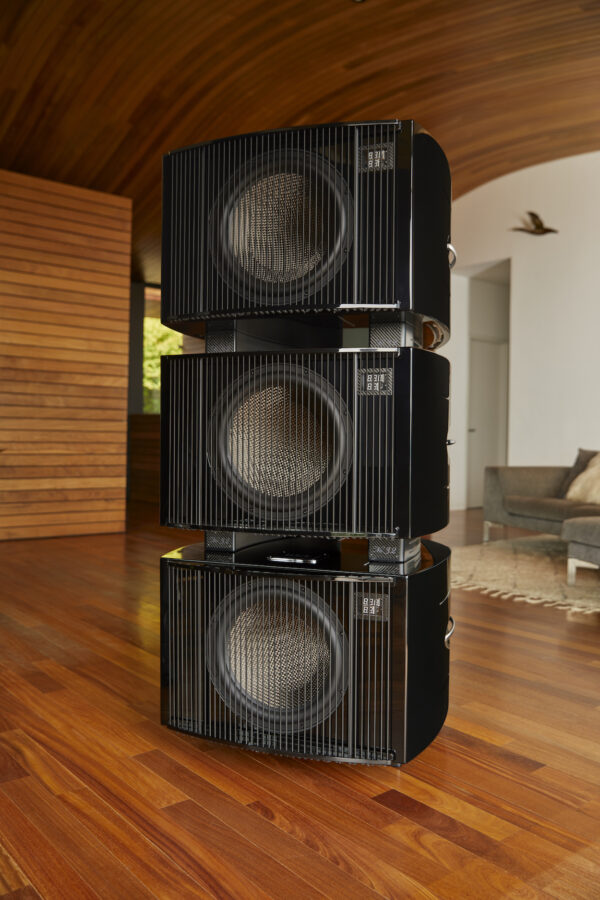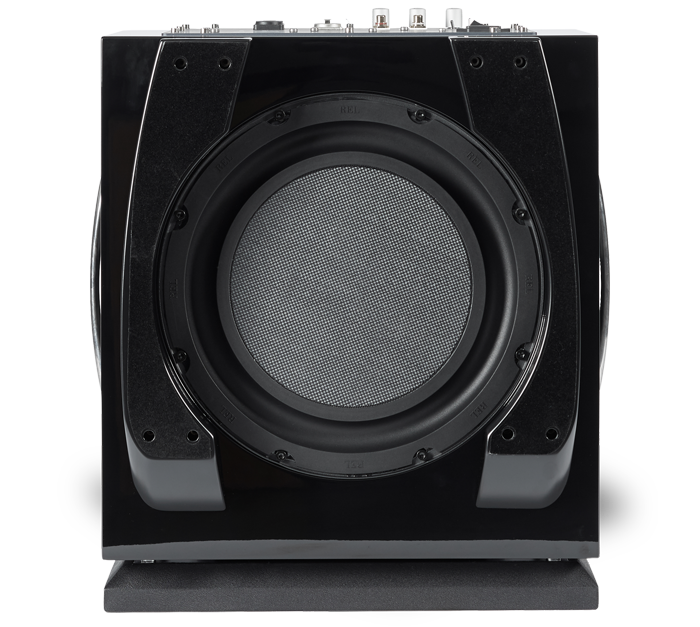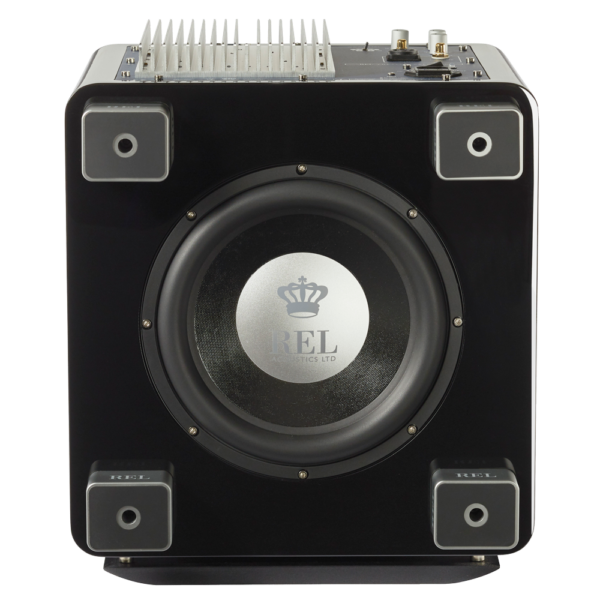Blog
The Purpose of Passive Subwoofer Designs
Designing Cabinets for Specific Applications

“Why don’t you use proper sealed box designs on ALL your models?” harrumphed an irate octogenarian at me in a recent to-and-fro phone call. As though it was gospel that nothing but (fill in the blank for the technical church of your preference) a forward-firing design according to some, “proper” sealed box design is the only proper way to design a powered subwoofer. So we thought explaining some of the technical solutions as they relate to driver, passive drivers and cabinet design and size goes into our various models might help.
With all due respect to the lovely gentleman who called somewhat irate and hung up a friend, it’s never as simple as one style of design fits all. We use two basic approaches, sealed box or forward-firing main drivers air-coupled to downward firing passive drivers.
Decades ago, two Australians name Thiele and Small –no doubt the result of blood rushing to their heads from hanging upside down on the bottom of the planet– created a study of various parameters that affect drivers and how they interact with boxes in which they’re placed. One of the most important understandings that arose from their work is the understanding that, the bigger the box, the softer the air spring inside that box is; meaning that additional measures to extract performance from the cabinet is unnecessary. Conversely, drivers designed for placement in smaller cabinets can be designed with softer, floppier suspensions to allow them to still go quite deep.

Sealed Box Forward Firing:
On our large Reference models, we are able to use an incredibly high-quality carbon fibre driver with nothing more than carefully arranged internal absorption material made from recycled blue jeans. These drivers are tautly suspended and built to ridiculously tight tolerances which means that the driver can be perfectly controlled by the large, high current amplifiers that reside within each cabinet. So, isn’t our older customer right? Of course he is. For a client with the disposable means to pursue the finest, a perfectly sculpted sealed box in a large cabinet with first rate electronics setup in stereo pairs or, in his case, a Line Array of 6 (3 per side) for the ultimate experience is the ideal, perfectly wonderful ne plus ultra experience. At roughly $60,000 for the full stack of No.32’s complete with BassLine Blue jumpers this represents an all-out attack on the edge of the art.
So then, we’re supposed to throw in the towel on everyone else who can’t afford at least a partial-use annual contract on a Gulfstream G-550 corporate jet? Our business is built on committing to studying, then building, the state of the art. But we then turn our attention from the lessons learnt on these projects to practical reductions and reinterpretations at a fraction of those prices. To borrow a racing analogy, like Porsche who win at Le Mans with regularity we do our very best to deliver the core of those engineering applications into our road cars, our affordable subwoofer models.
So it is that we offer the Serie S/812 and S/510 which offer an amazing amount of the No.32 experience, but reduced to work in rooms of average scale and more modest systems. And we ensure that they are designed from the outset to work properly in Line Arrays at a cost approximately 1/3 that of the No.32.
Near Reference in Medium Cabinets:

What does this have to do with our sealed box-versus-any-other-style of cabinet tuning? Well, when we need to work in a cabinet volume a quarter the volume of the No.32 but still want to deliver loud, deep bass. And being REL, we demand precision control to produce near state of the art speed with right-now stop and start abilities. Here, we turn to a precision form of passive driver. Our passives in the Serie S are designed to be stiffer than any others we have encountered, yet tuned to very deep resonant frequencies (permits very deep bass production) to allow exceptionally low bass to emerge. More importantly, they allow medium-sized cabinets to “flex”, or breathe, and provide a very large, deeply tuned driver to act properly in a much smaller cabinet. This approach permits near-reference performance in medium chassis cabinets (something no port would permit as these require MUCH larger cabinets). Our octogenarian was actually happy to learn that friends of his, slightly less fortunate than himself, could still enjoy something like his own experience.

Sealed and Sealed with Passive:
Finally, we turn to our softer, gentler tuning in the Serie T/x. Similar to the reasoning used in our Serie S, we needed even smaller and more compact cabinets to work in smaller spaces and more affordable systems. These designs use sealed box in our smallest designs, and active forward-firing (like mini versions of our much more expensive Serie S models). Fundamentally, the suspension tuning required to work properly in a truly compact enclosure necessitates a softer tuned suspension for both active and passive drivers. Careful listening and resultant tuning means we deliver a ton of performance for not a great deal of money in our T/x. We’ll save the Serie H/T for another day.
In the end, good engineering requires understanding all the technical variables, listening carefully to customer’s needs and working the problem(s) until we can obtain the highest and best solution for the challenges defined by customer’s system composition, their average room size and their ultimate expectations of performance. At each stage along the way, we burn a lot of midnight oil massaging the various details to ensure that each category of clients gets the essence of REL that is possible within a pretty tightly grouped definition of the REL ownership experience.
Thank you for reading our latest blog. We strive to provide content that’s both entertaining and educational.
If you have questions or suggestions for future articles, reach out to us at contactus@rel.net. We value your input and will do our best to respond within a few days.
With over 160 years of combined experience, we’re committed to making your audio experience exceptional. If you found value in this piece, please share it with friends who might benefit.











